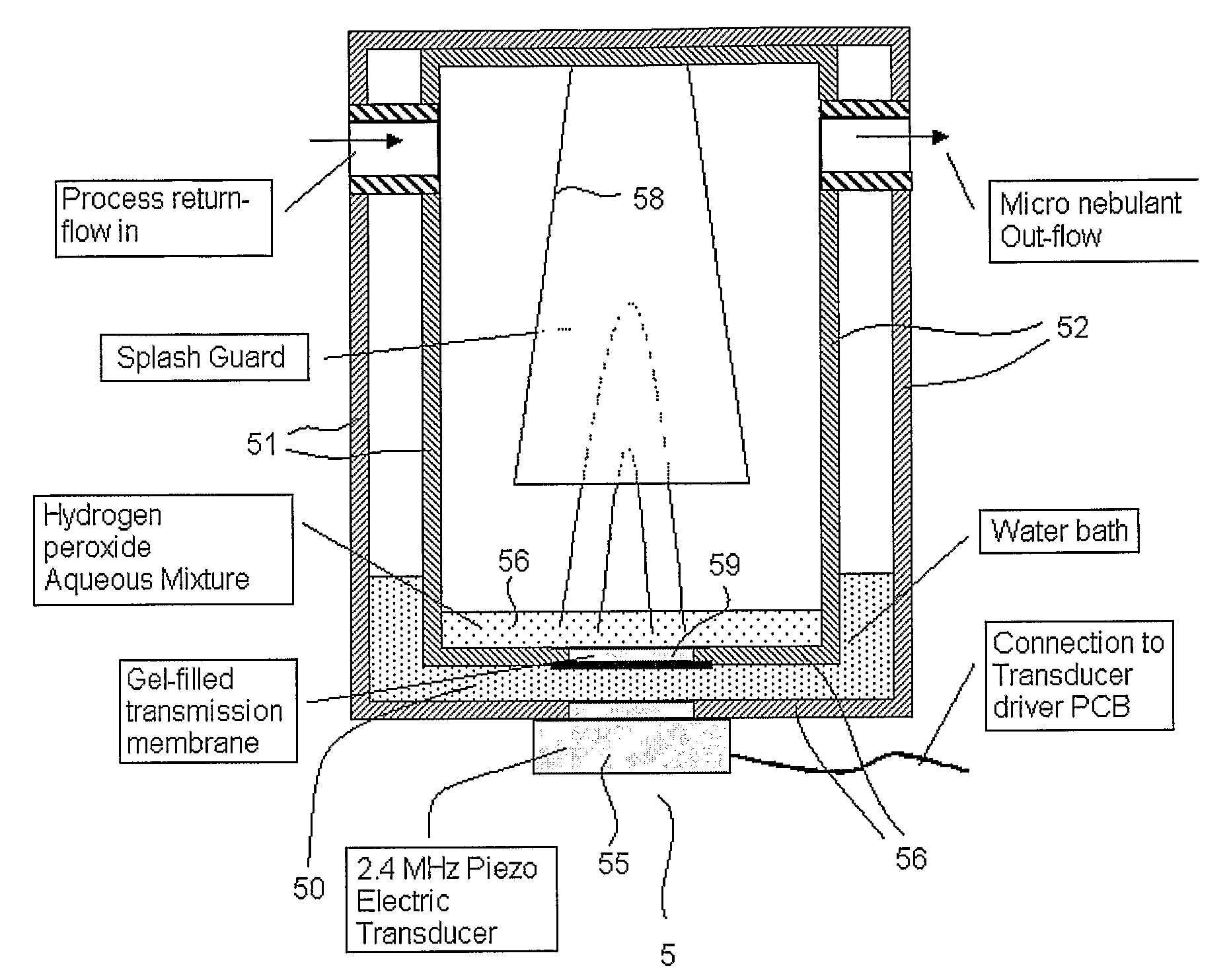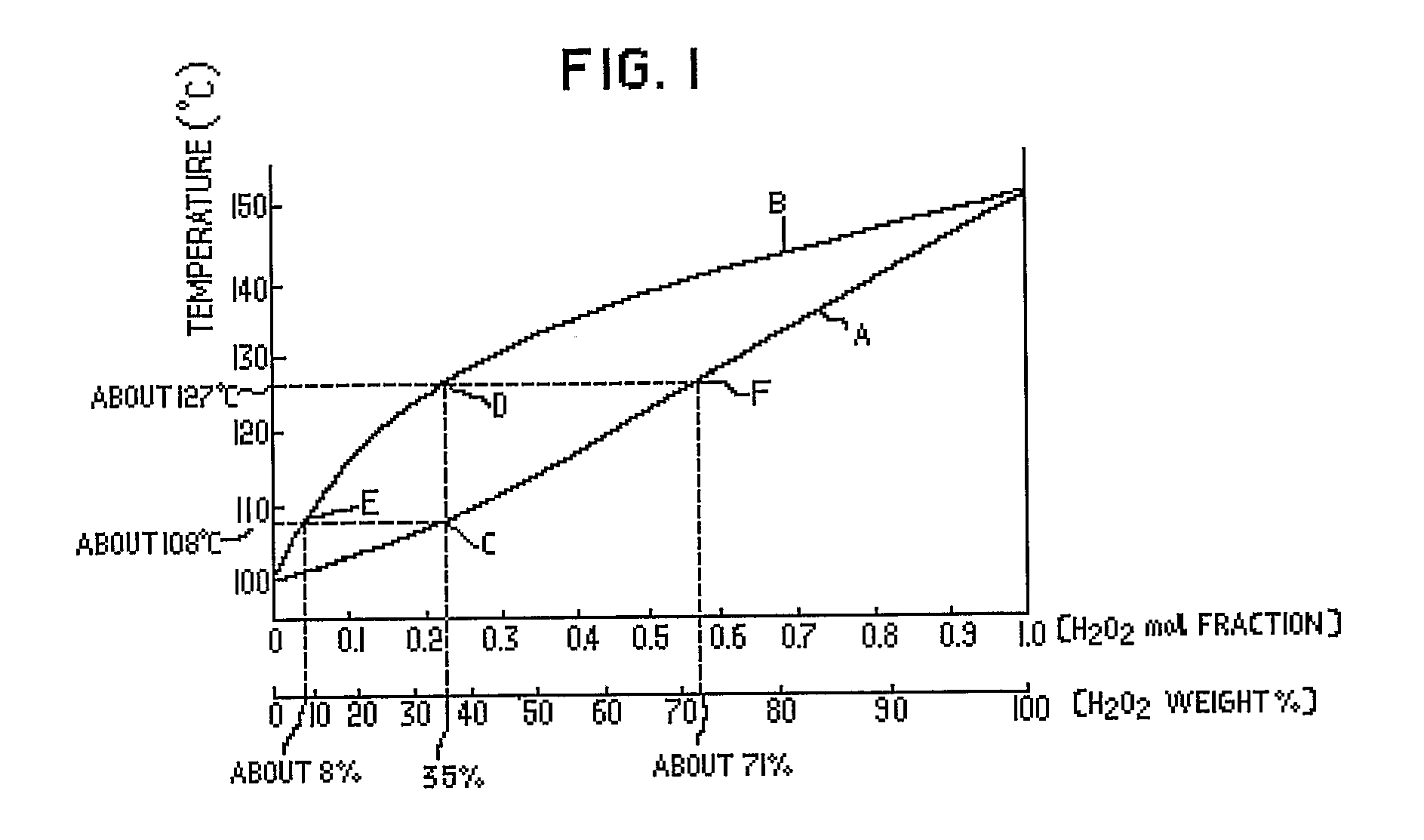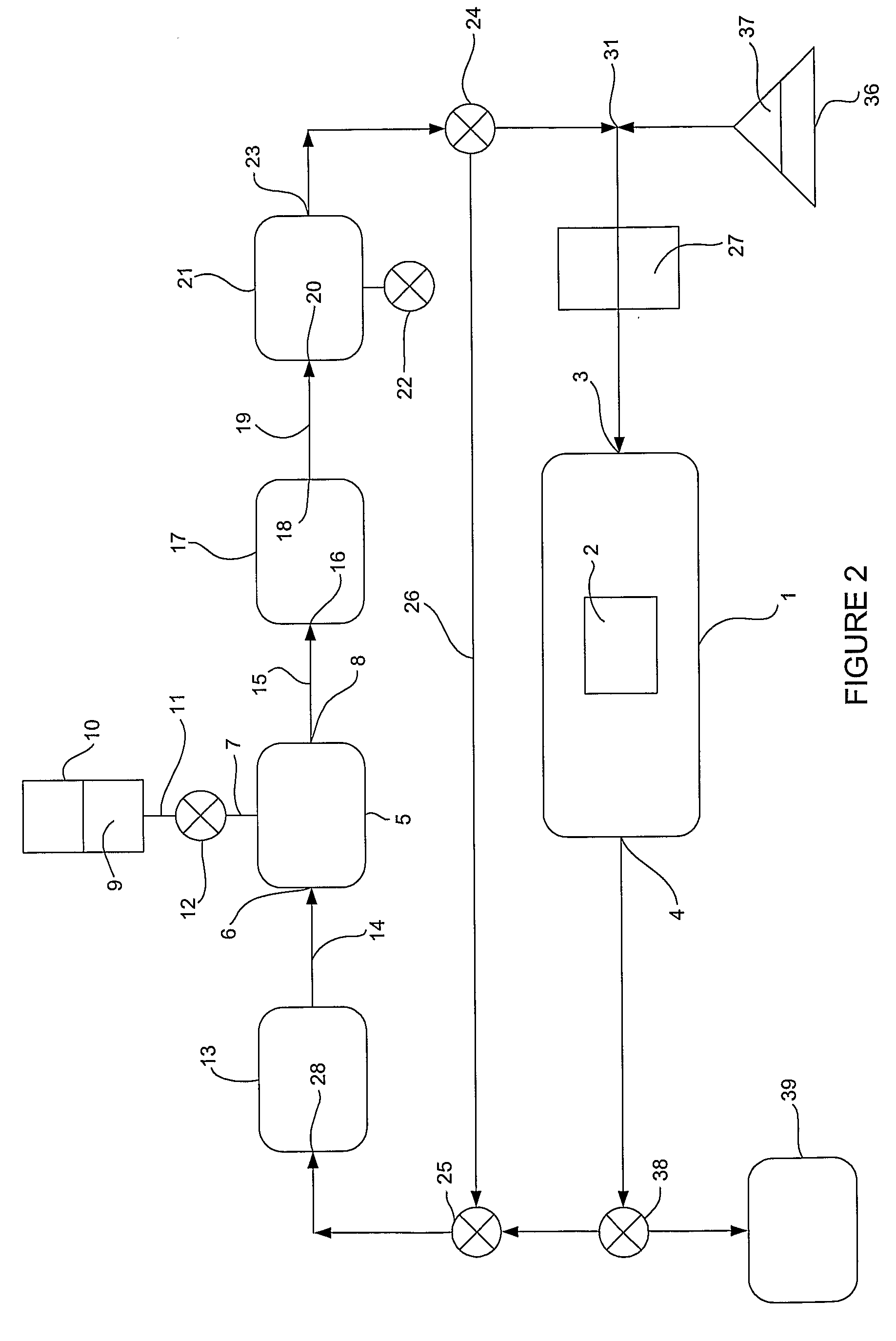Aerosol
a technology of aerosol and aerosol, which is applied in the field of improved methods for disinfection or sterilization of medical instruments, to achieve the effect of reducing the concentration of microorganisms and avoiding or ameliorating them
- Summary
- Abstract
- Description
- Claims
- Application Information
AI Technical Summary
Benefits of technology
Problems solved by technology
Method used
Image
Examples
example 1
[0118]35% hydrogen peroxide was nebulised in the apparatus previously described with reference to FIG. 2 and with the sterilization chamber on line. Unless otherwise specified the system parameters used in all examples were:
Nebulized solution: hydrogen peroxide in water.
Feed peroxide conc.: 35 wt %.
System volume: 0.04 m3.
Nebuliser delivery rate: 8+ / −1.5 mg / min
Nebuliser duty cycle: 20 sec / min
Power supply; 27+ / −2 mg / min
Aerosol flow rate: 1.5+ / −0.3 m / s
Initial chamber humidity 20% RH
Chamber temperature: 45° C.
[0119]In example 1 the system parameters were as described above, except that the nebuliser delivery rate was 10 mg / l / min and the applied energy in heater 17 was 1.5 KJ / min. Water removal was by means of a cold trap 17 utilizing a Peltier device to achieve cooling. The nebulant issued from the cold trap from outlet 23 at a temperature of 45° C. Appended Table 2 and FIG. 9 show the relative humidity in the chamber of FIG. 1 over a 15 minute cycle.
[0120]As shown in FIG. 9 the relativ...
example 2
[0122]A number of experiments were performed with mated surfaces according to the mated surface test previously described being placed in sterilization chamber 1. using the embodiment of FIG. 2. The parameters were generally as for example 1, except that temperature, relative humidity, and exposure time were varied. Appended FIG. 10 shows the boundary conditions of RH % and temperature required to obtain a log 6 reduction in a bio burden on mated surfaces using the mated surface test and within a given time. A log 6 reduction in bio burden was obtained within the area indicated in FIG. 10. Outside that area, the log reduction was less than 6. Thus mated surfaces could be sterilized in 10 minutes at between 45 and 48° C. and at 30-40% RH, and in 14 minutes from about 36° C. to 47.5° C. and at a relative humidity of between 30% and 60% RH. Although not shown in FIG. 10, it is noteworthy that a log 6 reduction is not achievable within 20 minutes at greater than about 70%-80% RH and tem...
example 3
[0123]In this example a variety of different endoscopes were sterilized according to the invention over a 10 minute sterilization period. The endoscopes were inoculated as previously described and then placed in a sterilization chamber 1 of apparatus according to FIG. 2. The apparatus was controlled and operated in accordance with the invention, the parameters being as in example 1 except as specified. Under the equilibrium conditions tabulated, the nano-mist was admitted to the sterilization chamber for 10 minutes, and the microbiological efficacy of the treatment was then measured. The results are reported in appended table 3. It can be seen that the treatment was effective in sterilizing lumens ranging from 1 mm to 4 mm in diameter and up to 3.5 m in length within 10 minutes.
[0124]By way of comparison, a prior art nebulant of 35% hydrogen peroxide at 43° C. and at 100% humidity (no water removal), while able to achieve sterilization in a 1 mm diameter lumen of 2.5 meters length i...
PUM
| Property | Measurement | Unit |
|---|---|---|
| diameter | aaaaa | aaaaa |
| diameter | aaaaa | aaaaa |
| density | aaaaa | aaaaa |
Abstract
Description
Claims
Application Information
 Login to View More
Login to View More - R&D
- Intellectual Property
- Life Sciences
- Materials
- Tech Scout
- Unparalleled Data Quality
- Higher Quality Content
- 60% Fewer Hallucinations
Browse by: Latest US Patents, China's latest patents, Technical Efficacy Thesaurus, Application Domain, Technology Topic, Popular Technical Reports.
© 2025 PatSnap. All rights reserved.Legal|Privacy policy|Modern Slavery Act Transparency Statement|Sitemap|About US| Contact US: help@patsnap.com



